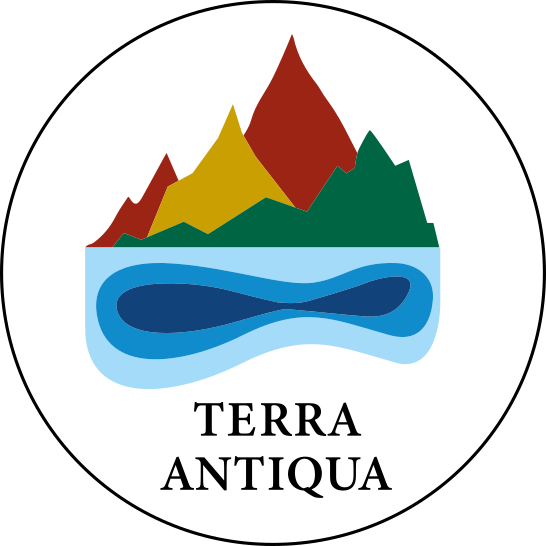Preparing the input data with GPlates
A full set of files are available with Terra Antiqua to generate paleogeographic reconstructions at given ages (so far 20, 30, 40, 50 and 60 Ma). These include the three main input data you need to load in QGIS to start the processing with Terra Antiqua: Bathymetry, Bedrock topography, and Ice topography. It also includes all the files that have been used to generate these 3 input data files (paleo-shorelines, masks, datasets, etc…).
To build a new paleogeographic map at another age you will first want to generate input data for Terra Antiqua using the software Gplates. If you’re not very familiar with GPlates, it has a very complete set of tutorials and a user manual. For each part of the process described below, you will find a reference to the corresponding Gplates user manual chapters and tutorials.
GPlates (Müller et al. 2018) is an open-source software for plate motion reconstruction that restores the movement of the tectonic plates on the globe that are given by successive relative rotations through age steps. This rotation model is recorded in a dedicated rotation file that can be read by Gplates (see below on getting a rotation model). For any given age included in the rotation model, the past positions of tectonic plates (and any other polygon or datapoint assigned to a tectonic plate) can be exported from Gplates into a shapefile that can be imported into QGIS. GPlates uses, as input, a rotation model and polygons that represent tectonic plates.
- Load and modify the rotation model
- Edit the tectonic blocks
Load and rotate present-day topography into GPlates - Export the resulting DEM and the polygons.
Tutorial: 4 (GPlates for ArcGIS Users)
The rotated DEM mentioned above can be exported as a raster (.GEOtif) and the polygons as a shapefile (.shp) that can be read with QGIS directly.
- Rotating data point and geometric features
Tutorial: 4 (GPlates for ArcGIS Users)
Any datapoint, polygon, polyline, mask or other geometric features included in a shapefile can be assigned a plate ID such that it can be rotated along with this tectonic plate using GPlates. This is useful to rotate entire datasets to their correct past positions in order to modify topography or bathymetry. For example shorelines, fossil or paleoelevation datasets.
User manual chapters: 3, 4, 8 | Tutorials: 1.1 & 2.1
The rotation model included in the Terra Antiqua sample data consists of a compilation of several models (Poblete et al., 2021); http://map.paleoenvironment.eu. It contains about 800 tectonic continental blocks and their relative rotations from the Cretaceous to the present-day based on multiple generations of ever improving models from the geodynamic community. Each tectonic block is assigned a tectonic Plate ID, referenced in the rotation file. Note that a tectonic plate includes continental and/or oceanic parts that rotate coherently for a given age interval along a small circle centered on a Euler pole. Refer to Poblete et al., 2021 for further detail about the rotation model (Gplates offers different rotation models and more can be found from various sources, e.g. paleoenvironment.eu; www.earthbyte.org; www.geologist.nl).
The rotation models can be modified using Gplates to alter the position of the tectonic plates through age, to add tectonic continental blocks and many other features.
User manual chapters: 11 (interacting with features), 14 (editing geometries), 15 (creating new geometries) | Tutorials 1.4 (interacting with features), 1.5 & 2.2 (changing and creating features)
You may also change the position, modify the shape, or add a tectonic continental block. These actions can be done in QGIS or in GPlates. QGIS allows a more detailed reconstruction using the shapefile that contains the polygons (see How to table with links to QGIS tutorials 13, 14, and 15). This will require loading the shapefile with the polygons first in QGIS, export it, and then load it back in GPlates. Thus using Gplates directly can be faster for rough modification, and the result is saved there and can be used straight away.
User manual chapter: 4 (load rasters) | Tutorials: 3.1 (loading rasters) & 3.2
Once the tectonic continental blocks are rotated you will need to use another function of GPlates: enter the present-day topography as a DEM (e.g.: ETOPO1, a global relief model of Earth’s surface that integrates land topography and ocean bathymetry). This way, the software can “cut” it according to the tectonic blocks and rotate the ETOPO with them (in the tutorial 3.2 they call it “cookie-cut”).
